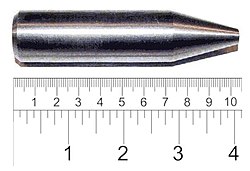Welcome to DU!
The truly grassroots left-of-center political community where regular people, not algorithms, drive the discussions and set the standards.
Join the community:
Create a free account
Support DU (and get rid of ads!):
Become a Star Member
Latest Breaking News
General Discussion
The DU Lounge
All Forums
Issue Forums
Culture Forums
Alliance Forums
Region Forums
Support Forums
Help & Search
Foreign Affairs
Related: About this forumU.S. forces used depleted uranium rounds in civilian areas in Iraq, reports finds **graphic pix**
http://www.rawstory.com/rs/2014/06/19/u-s-forces-used-depleted-uranium-rounds-in-civilian-areas-in-iraq-reports-finds/U.S. forces used depleted uranium rounds in civilian areas in Iraq, reports finds
By Rob Edwards, The Guardian
Thursday, June 19, 2014 12:46 EDT
~snip~
Coordinates revealing where US jets and tanks fired nearly 10,000 DU rounds in Iraq during the war in 2003 have been obtained by the Dutch peace group Pax. This is the first time that any US DU firing coordinates have been released, despite previous requests by the United Nations Environment Programme and the Iraqi government.
According to PAX’s report, which is due to be published this week, the data shows that many of the DU rounds were fired in or near populated areas of Iraq, including As Samawah, Nasiriyah and Basrah. At least 1,500 rounds were also aimed at troops, the group says.
This conflicts with legal advice from the US Air Force in 1975 suggesting that DU weapons should only be used against hard targets like tanks and armoured vehicles, the report says. This advice, designed to comply with international law by minimising deaths and injuries to urban populations and troops, was largely ignored by US forces, it argues.
~snip~
PAX estimates that there are more than 300 sites in Iraq contaminated by DU, which will cost at least $30m to clean up. DU is a chemically toxic and radioactive heavy metal attractive to weapons designers because it is extremely hard and can pierce armour.
--
http://en.wikipedia.org/wiki/Depleted_uranium#Military_applications
Depleted uranium
Depleted uranium (DU; also referred to in the past as Q-metal, depletalloy or D-38) is uranium with a lower content of the fissile isotope U-235 than natural uranium.[2] (Natural uranium is about 0.72% U-235—the fissile isotope, and the DU used by the U.S. Department of Defense contain less than 0.3% U-235). Uses of DU take advantage of its very high density of 19.1 g/cm3 (68.4% denser than lead). Civilian uses include counterweights in aircraft, radiation shielding in medical radiation therapy and industrial radiography equipment and containers used to transport radioactive materials. Military uses include defensive armor plating and armor-piercing projectiles.
Most depleted uranium arises as a byproduct of the production of enriched uranium for use in nuclear reactors and in the manufacture of nuclear weapons. Enrichment processes generate uranium with a higher-than-natural concentration of lower-mass uranium isotopes (in particular U-235, which is the uranium isotope supporting the fission chain reaction) with the bulk of the feed ending up as depleted uranium, in some cases with mass fractions of U-235 and U-234 less than a third of those in natural uranium. U-238 has a much longer halflife than the lighter isotopes, and DU therefore emits less alpha radiation than the same mass of natural uranium: the US Defense Department states DU used in US munitions has 60% of the radioactivity of natural uranium.[3]
Since the U-235 content of nuclear reactor fuel is reduced by fission, uranium recovered by nuclear reprocessing from spent nuclear reactor fuel made from natural uranium will have a lower-than-natural U-235 concentration. Such 'reactor-depleted' material will have different isotopic ratios from enrichment byproduct DU, and can be distinguished from it by the presence of U-236.[4] Trace transuranics (another indicator of the use of reprocessed material) have been reported to be present in some US tank armor.[3]
The use of DU in munitions is controversial because of questions about potential long-term health effects.[5][6] Normal functioning of the kidney, brain, liver, heart, and numerous other systems can be affected by uranium exposure, because uranium is a toxic metal.[7] It is only weakly radioactive because of its long radioactive half-life (4.468 billion years for uranium-238, 700 million years for uranium-235). The biological half-life (the average time it takes for the human body to eliminate half the amount in the body) for uranium is about 15 days.[8] The aerosol or spallation frangible powder produced during impact and combustion of depleted uranium munitions can potentially contaminate wide areas around the impact sites, leading to possible inhalation by human beings.[9]
The actual level of acute and chronic toxicity of DU is also a point of medical controversy. Several studies using cultured cells and laboratory rodents suggest the possibility of leukemogenic, and of genetic, reproductive, and neurological effects from chronic exposure.[5] A 2005 epidemiology review concluded: "In aggregate the human epidemiological evidence is consistent with increased risk of birth defects in offspring of persons exposed to DU."[10] The World Health Organization, the directing and coordinating authority for health within the United Nations, states that no risk of reproductive, developmental, or carcinogenic effects have been reported in humans due to DU exposure.[11][12] This report has been criticized for not including possible long term effects of DU on the human body.[13]

The DU penetrator of a 30 mm round[1]
Ammunition
Most military use of depleted uranium has been as 30 mm caliber ordnance, primarily the 30 mm PGU-14/B armour-piercing incendiary round from the GAU-8 Avenger cannon of the A-10 Thunderbolt II used by the United States Air Force. 25 mm DU rounds have been used in the M242 gun mounted on the U.S. Army's Bradley Fighting Vehicle and the Marine Corp's LAV-25.
The U.S. Marine Corps uses DU in the 25 mm PGU-20 round fired by the GAU-12 Equalizer cannon of the AV-8B Harrier, and also in the 20 mm M197 gun mounted on AH-1 Cobra helicopter gunships. The United States Navy's Phalanx CIWS's M61 Vulcan Gatling gun used 20 mm armor-piercing penetrator rounds with discarding plastic sabots made using depleted uranium, later changed to tungsten.
Another use of depleted uranium is in kinetic energy penetrators, anti-armor rounds such as the 120 mm sabot rounds fired from the British Challenger 1, Challenger 2,[31] M1A1 and M1A2 Abrams.[32] Kinetic energy penetrator rounds consist of a long, relatively thin penetrator surrounded by a discarding sabot. Staballoys are metal alloys of depleted uranium with a very small proportion of other metals, usually titanium or molybdenum. One formulation has a composition of 99.25% by mass of depleted uranium and 0.75% by mass of titanium. Staballoys are approximately 1.67 times as dense as lead and are designed for use in kinetic energy penetrator armor-piercing ammunition. The US Army uses DU in an alloy with around 3.5% titanium.

1987 photo of Mark 149 Mod 2 20mm depleted uranium ammunition for the Phalanx CIWS aboard USS Missouri.
According to 2005 research,[33] at least some of the most promising tungsten alloys that have been considered as replacement for depleted uranium in penetrator ammunitions, such as tungsten-cobalt or tungsten-nickel-cobalt alloys, also possess extreme carcinogenic properties, which by far exceed those (confirmed or suspected) of depleted uranium itself: 100% of rats implanted with a pellet of such alloys developed lethal rhabdomyosarcoma within a few weeks.
Depleted uranium is favored for the penetrator because it is self-sharpening and pyrophoric.[30] On impact with a hard target, such as an armored vehicle, the nose of the rod fractures in such a way that it remains sharp. The impact and subsequent release of heat energy causes it to disintegrate to dust and burn when it reaches air because of its pyrophoric properties.[30] When a DU penetrator reaches the interior of an armored vehicle it catches fire, often igniting ammunition and fuel, killing the crew and possibly causing the vehicle to explode. DU is used by the U.S. Army in 120 mm or 105 mm cannons employed on the M1 Abrams tank. The Russian military has used DU ammunition in tank main gun ammunition since the late 1970s, mostly for the 115 mm guns in the T-62 tank and the 125 mm guns in the T-64, T-72, T-80, and T-90 tanks.
The DU content in various ammunition is 180 g in 20 mm projectiles, 200 g in 25 mm ones, 280 g in 30 mm, 3.5 kg in 105 mm, and 4.5 kg in 120 mm penetrators. DU was used during the mid-1990s in the U.S. to make hand grenades, cluster bombs, and land mines, but those applications have been discontinued, according to Alliant Techsystems.[citation needed] The US Navy used DU in its 20 mm Phalanx CIWS guns, but switched in the late 1990s to armor-piercing tungsten.
It is thought that between 17 and 20 countries have weapons incorporating depleted uranium in their arsenals. They include the U.S., the UK, France, Russia, China, India, Turkey, Saudi Arabia, Israel, Bahrain, Egypt, Kuwait, Pakistan, Thailand, Iraq and Taiwan.[citation needed] Iran also has performed wide research on DU penetrators since 2001[citation needed]. DU ammunition is manufactured in 18 countries. Only the US and the UK have acknowledged using DU weapons.[34]
In a three-week period of conflict in Iraq during 2003 it was estimated that over 1000 tons of depleted uranium munitions were used.[35]
--
30mm compared to 5.56 mm, 7.62 mm, .50 cal, 20mm and 25 mm rounds

--
GRAPHIC PIX
Birth defects in southern Iraq after we invaded them; this is the least offensive pic I could find.
google: basra birth defects

InfoView thread info, including edit history
TrashPut this thread in your Trash Can (My DU » Trash Can)
BookmarkAdd this thread to your Bookmarks (My DU » Bookmarks)
2 replies, 7251 views
ShareGet links to this post and/or share on social media
AlertAlert this post for a rule violation
PowersThere are no powers you can use on this post
EditCannot edit other people's posts
ReplyReply to this post
EditCannot edit other people's posts
Rec (4)
ReplyReply to this post
2 replies
 = new reply since forum marked as read
Highlight:
NoneDon't highlight anything
5 newestHighlight 5 most recent replies
= new reply since forum marked as read
Highlight:
NoneDon't highlight anything
5 newestHighlight 5 most recent replies
U.S. forces used depleted uranium rounds in civilian areas in Iraq, reports finds **graphic pix** (Original Post)
unhappycamper
Jun 2014
OP
dipsydoodle
(42,239 posts)1. largely ignored by US forces......
Mnemosyne
(21,363 posts)2. K&R, because it still matters. nt